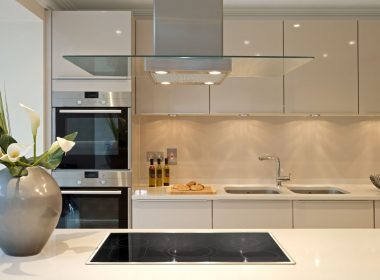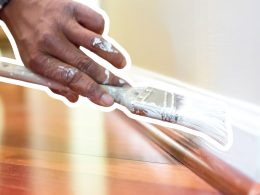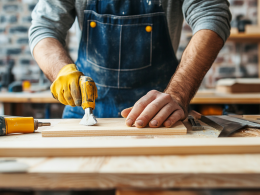Moving houses can be an exciting and enjoyable experience. It offers a fresh start and the opportunity to personalize a new space according to your tastes and needs. The thrill of setting up a new home, decorating it, and making it your own can be incredibly fulfilling.
For many, it’s a chance to leave behind the old and adapt to the new, creating a living environment that better suits their lifestyle. The excitement of unpacking and organizing can bring a sense of accomplishment and joy.
Moving from a place like Tucson adds a unique flavor to this experience. The diverse culture, beautiful landscapes, and vibrant community of Tucson are hard to leave, but they also inspire new beginnings.
As you move to a new city, the opportunity to integrate elements of your Tucson life into your new home makes the transition smoother and more meaningful. Personalizing your new space becomes a way to mix the old with the new, creating a comfortable and familiar environment in an unfamiliar setting.
Hiring Professional Movers

One of the first and most important steps in ensuring a smooth transition to your new home is hiring professional movers. Experienced movers in Tucson can make this process significantly easier by handling the logistics of shifting and properly placing your household items.
Their expertise ensures that your belongings are transported safely and efficiently, reducing the stress and physical burden on you. Professional movers can help organize the move, providing packing materials and handling heavy lifting, which allows you to focus on other aspects of settling into your new home.
The benefits of hiring professional Tucson movers go beyond just convenience. Experienced movers possess the expertise to handle delicate and valuable items carefully, reducing the likelihood of damage.
They are skilled at managing the complexities of moving, such as fitting large furniture through tight spaces and ensuring that all items arrive at your new home in the same condition they left the old one. This professional help can turn a potentially chaotic move into a well-organized and smooth process.
Assessing Your New Space
Once you’ve settled in, the next step is to assess your new space. This involves a thorough evaluation of each room to identify areas that need improvement or updating. Take measurements and note the condition of different rooms and fixtures to determine what changes are necessary.
This initial assessment is crucial for creating an effective home improvement plan, as it helps you understand the scope of work required and prioritize tasks based on immediate needs and long-term goals.
Prioritizing which areas to address first can help streamline the home improvement process. Focus on essential repairs and updates that will make your home functional and comfortable, such as fixing any structural issues or updating outdated plumbing and electrical systems.
Once these critical areas are addressed, you can shift your attention to cosmetic improvements and personal touches that enhance the aesthetic appeal of your space.
Setting a Budget

Setting a budget is a crucial step in any home improvement plan. Establishing a clear budget helps you allocate funds for different projects and ensures you don’t overspend. Start by determining how much you can realistically afford to spend on home improvements, taking into account both essential repairs and desired upgrades.
It’s important to strike a balance between affordability and quality, ensuring that you invest in durable and reliable materials and services without breaking the bank.
Allocating funds wisely requires careful planning and research. Consider the cost of materials, labor, and any additional expenses that might arise during the renovation process.
It can be helpful to get multiple quotes from contractors and suppliers to compare prices and find the best deals. Additionally, setting aside a contingency fund for unexpected costs can prevent financial strain if surprises arise.
Creating a Vision Board
Start by collecting images, color swatches, material samples, and any other elements that inspire you. These can be gathered from magazines, online resources, or even physical samples from home improvement stores. Arranging these items on a vision board helps you see how different elements work together and allows you to refine your ideas before committing to any specific design choices.
A vision board also serves as a guide throughout the renovation process, keeping you focused and inspired. It helps prevent decision fatigue by providing a clear visual representation of your goals. As you progress with your home improvement projects, refer back to your vision board to ensure that each step aligns with your overall design plan.
Role of Experts

While DIY projects can be rewarding, hiring professionals for certain aspects of your home improvement plan ensures high-quality results and saves time. Specialists such as contractors, electricians, and plumbers have the expertise to handle complex tasks that require specific skills and knowledge.
Their experience allows them to complete projects efficiently and safely, minimizing the risk of errors or accidents. By relying on professionals, you can focus on the creative aspects of your renovation, knowing that the technical work is in capable hands.
Finding reputable professionals requires some research and diligence. Start by asking for recommendations from friends, family, or neighbors who have recently completed similar projects. Online reviews and ratings can also provide insights into a professional’s reliability and quality of work. When you’ve narrowed down your choices, schedule consultations to discuss your project in detail and ask for references.
Incorporating Personal Touches
Adding personal touches to your new space is what truly makes it feel like home. These elements reflect your personality and create a unique and inviting atmosphere.
Start by displaying family photos, artwork, and heirlooms that hold sentimental value. These items not only personalize your space but also bring warmth and familiarity. Using your favorite colors and textures in furnishings and decor can also enhance the comfort and aesthetic appeal of your home.
Beyond decor, consider incorporating features that cater to your lifestyle and interests. If you love reading, create a cozy reading nook with comfortable seating and good lighting. For cooking enthusiasts, invest in kitchen upgrades that make meal preparation more enjoyable.
Conclusion
Creating a personalized home improvement plan involves several key steps that ensure your new space reflects your style and meets your needs. Starting with hiring professional movers to ensure a smooth transition, assessing your new space thoroughly, and setting a realistic budget are foundational steps. Building a vision board helps you visualize and stay focused on your design goals while hiring professionals ensures that complex tasks are handled expertly. Finally, incorporating personal touches adds the finishing touches that make your house feel like home.











